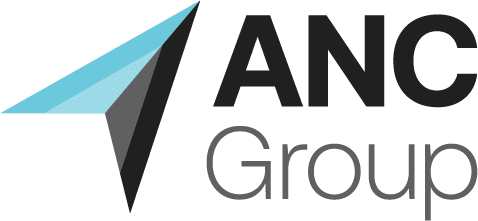Think about a charter school experiencing a cyberattack that exposes sensitive student records—grades, medical histories, and even home addresses. The aftermath isn’t just about solving technical issues; it’s about regaining the trust of parents, staff, and, most importantly, the students whose safety and identities were compromised.
Technology has transformed education for the better, making learning more interactive, accessible, and efficient. Charter schools, known for their innovative approaches, rely heavily on tools like virtual classrooms and learning management systems (LMS).
However, the increasing use of technology also makes K-12 schools prime targets for cyber threats. This is especially concerning as student data, including personally identifiable information (PII), becomes a lucrative target for hackers.
Charter schools face unique challenges when it comes to implementing robust cybersecurity measures. Limited budgets, diverse technology systems, and varying levels of IT expertise often leave them more exposed to cyber risks compared to larger public school districts.
If you’re an IT decision-maker at a charter school, we hope this blog will provide practical solutions you can implement to keep your students safe.
The Good and the Bad of Technology in Learning
Charter schools have embraced technology to revolutionize education. Tools like LMS platforms allow teachers to create engaging courses, track student progress, and facilitate communication between students and parents.
Online assessments and digital grading systems save time for educators while offering quick insights into individual and class performance. Virtual classrooms, especially since the COVID-19 pandemic, have also enabled continuity in education regardless of physical distance.
For instance, a school using Google Classroom with Chromebooks can provide a seamless digital experience, where collaborative projects and instant feedback are the norm. However, the incorporation of technology also opens up potential vulnerabilities.
The Flip Side: Vulnerabilities and Threats
Unfortunately, the reliance on technology brings risks. Data breaches and phishing scams have plagued schools across the nation. For example:
- Phishing Scams: Teachers have fallen victim to fraudulent emails asking for login credentials, giving hackers access to sensitive systems.
- Ransomware Attacks: 29,000 people in the Tucson Unified School District were impacted when hacking group “Royal” carried out a ransomware attack.
- Unauthorized Access: Students with savvy tech skills have exploited weak security measures to alter grades or access confidential files.
The educational sector reported hundreds of cyber incidents in recent years, and K-12 schools are particularly vulnerable due to their often outdated infrastructure and inadequate in-house cybersecurity teams.
Why Charter Schools Are Unique
Charter schools, while innovative and flexible, often operate with fewer resources than traditional public schools. Their autonomy allows them to adopt diverse technology platforms catering to different needs. However, this same diversity can lead to inconsistencies in security protocols.
For instance, one charter school may invest in encrypted databases, while another may rely on older, easier-to-breach systems. This fragmented approach can make the entire network more susceptible to attacks.
The Importance of Data Privacy in K-12 Education
Key Regulations to Know
Two primary regulations aim to protect student data:
- FERPA (Family Educational Rights and Privacy Act): FERPA ensures parents control access to their children’s education records. For example, schools must obtain written parental consent before sharing student information with external entities.
- COPPA (Children’s Online Privacy Protection Act): COPPA safeguards the online privacy of children under 13. For instance, parental permission is required for apps or websites to collect data from minors.
Charter schools must fully understand and comply with these regulations to maintain trust and avoid legal repercussions.
The Ethical Responsibility
Beyond compliance, there’s an ethical responsibility to protect student data. Imagine a student’s school records being leaked and used for identity theft. Beyond financial harm, the emotional distress caused to the student and their family is immeasurable. Cybersecurity isn’t just an IT issue—it’s a student safety issue.
The Bigger Picture
Securing student data fosters trust among families, building long-term support for the school. When parents know their children’s data and privacy are protected, they’re more likely to stay engaged in the educational process. Schools that prioritize security also create safer environments for learning and innovation.
Key Technologies Protecting Student Data
The good news? Modern technology offers tools that can drastically improve security in charter schools.
Encryption
Encryption is like locking sensitive data in a digital safe that only authorized individuals can open. Whether it’s student records stored in a database or reports sent via email, encrypting data ensures it remains unreadable to unauthorized users.
Access Controls
Access controls function like a keycard system in a building, restricting who can access certain files or systems. For example, a teacher might only have permission to view the grades of their students, while administrative staff can access broader school records.
Cloud Security
Secure cloud solutions enable remote learning while safeguarding data. For instance, platforms like Google Workspace or Microsoft 365 provide enterprise-grade security features, including automatic backups and real-time threat detection.
AI and Machine Learning
AI systems can detect unusual activity, such as multiple failed login attempts that might indicate a hacker is trying to access student records. This proactive approach minimizes risks before breaches occur.
Best Practices for Charter Schools
Developing a Security Culture
Building a security-first culture is essential. Here’s how to get everyone on board:
- Staff Training: Host workshops to teach staff about spotting phishing emails or using strong passwords.
- Student Awareness: Create fun, interactive lessons for students on safe internet practices, like what information not to share online.
Regular Audits and Assessments
Think of it as a “digital health check-up.” Conduct routine security audits to identify weaknesses. For instance, hire third-party experts to test your systems for vulnerabilities and review your compliance with FERPA and COPPA.
Incident Response Plans
What if a breach happens despite your best efforts? Having a well-defined incident response plan ensures you can act quickly. For example:
- Identify and contain the breach.
- Notify affected families and staff.
- Work with cybersecurity experts to assess damage and prevent future incidents.
Preparedness can mean the difference between a minor event and a crisis.
Safeguard Your School’s Data Today
As charter schools continue to innovate in education, the responsibility to protect student data must remain a top priority. With the right technology and practices, schools can reduce vulnerabilities, comply with regulations, and build trust with families.
At ANC Group, we specialize in helping charter schools protect what matters most—their students. If you’re ready to ensure your school’s data remains secure, contact us today. Together, we can build a safer and smarter technological future for your charter school.

